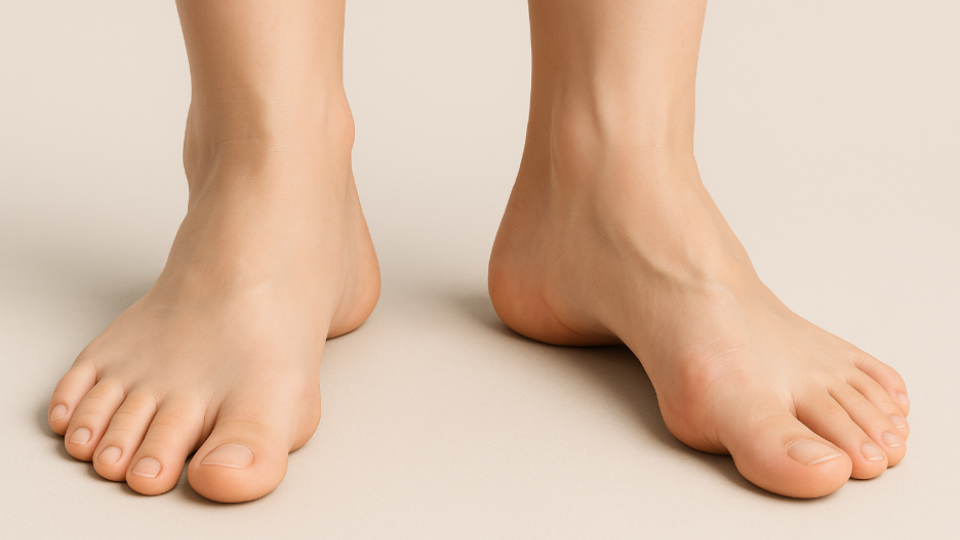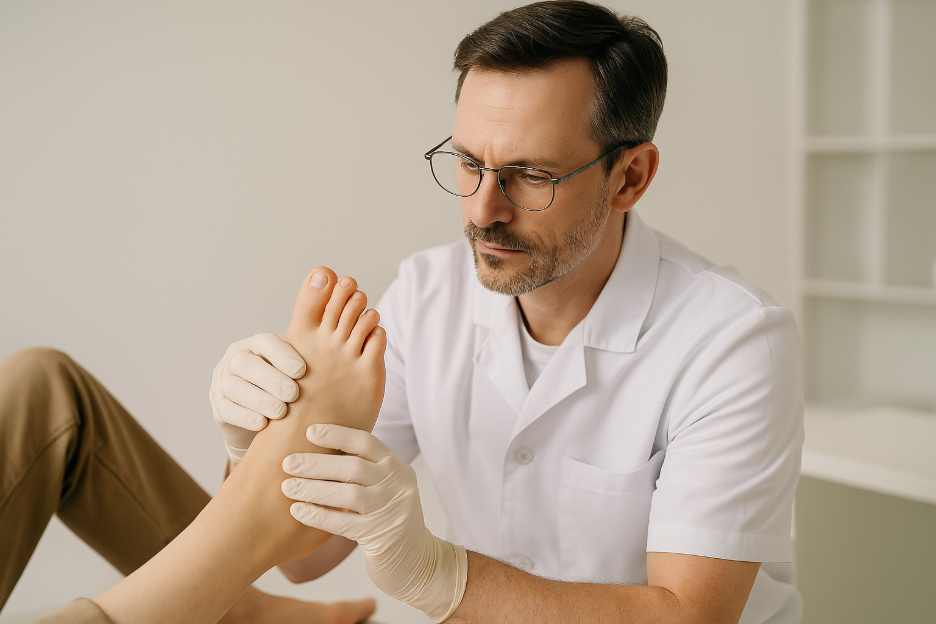Is Toenail Fungus Hereditary? What You Need to Know About Family Risk
Wondering if toenail fungus runs in your family? Learn about genetic risk, causes, and prevention from the podiatry specialists at FAS The Woodlands.

The shape of your foot arch could hold the key to understanding your unique physical experience.
Your foot's arch shape greatly influences movement, standing, and overall comfort. Arched feet and flat feet are two distinct types that significantly affect body alignment and comfort. Grasping these differences is more than just about foot anatomy; it's about enhancing your overall physical health.
Each foot arch type has its own set of characteristics, challenges, and support needs. Whether you have high arches or flat feet, knowing your type is crucial. It helps you make better choices about footwear, exercise, and medical interventions.
Foot mechanics involve intricate interactions between bones, ligaments, and muscles, shaping your unique arch pattern. Each person's arch is distinct, shaped by genetics and developmental processes.
Arches perform vital functions in your body's biomechanical system; they distribute your body weight evenly, absorb shock during walking and running, and provide stability and balance. And different arch structures can impact: Spinal positioning, joint stress, muscle engagement patterns, and overall biomechanical efficiency.
Arched Feet vs Flat Feet: Defining Characteristics and Differences
Your foot arch plays a key role in how your body absorbs impact, maintains balance, and distributes weight. Here’s how to distinguish between flat feet and high arches, along with the biomechanical implications of each:
Your specific foot type can impact everything from walking comfort to athletic performance. Identifying your arch type is crucial for choosing the right shoes, preventing injuries, and enhancing your body's biomechanical efficiency. Still unsure whether you have flat feet or high arches? Our blog on how to tell if you have a flat foot or a high arch offers simple tests and visuals to help you figure it out.

Understanding symptoms tied to different foot arch types is key to spotting health issues early. Your foot's shape greatly influences your body's mechanics. It affects your daily comfort and how easily you move.
Different arch types face unique pain challenges. Those with flat feet often feel intense pain in certain spots, such as:
Want to stay ahead of potential issues linked to fallen arches? Learn how to protect your feet over time with our blog on how to prevent flat feet complications, featuring proactive strategies and expert tips.
Arch variations can lead to several health issues that affect your mobility and comfort. Plantar fasciitis is common among those with both high and low arches. Shin splints and ankle instability often occur when foot mechanics are off. If you’re dealing with arch pain or heel discomfort linked to flat feet or high arches, don’t miss our guide on plantar fasciitis relief, best insoles, medical devices, and arch support solutions for expert-recommended ways to manage and prevent pain.
Your foot arch type plays a significant role in how you move and how your body absorbs impact during physical activity. High arches tend to offer less natural shock absorption, placing more stress on the heels, ankles, and knees. On the other hand, flat feet often lead to overpronation, where the foot rolls inward excessively, affecting alignment and stability.
Being aware of these tendencies allows you to adapt proactively and minimize the risk of pain or injury. Here’s how:
Understanding your foot arch type is crucial for foot care and wellness. Knowing whether you have high arches or flat feet helps you choose the right arch support. This can prevent health issues.
Seeking professional advice is key when facing foot challenges. If you have persistent pain, uneven shoe wear, or notice foot changes, see a podiatrist or orthopedic specialist. They can offer detailed assessments and personalized advice for your foot health.
Your feet are the base of your body's movement and alignment. Prioritizing foot care and understanding your arch type improves your physical comfort and prevents injuries.
Schedule an appointment with Foot & Ankle Specialists (FAS) The Woodlands for a personalized evaluation and expert guidance on finding the right support for your feet.

Wondering if toenail fungus runs in your family? Learn about genetic risk, causes, and prevention from the podiatry specialists at FAS The Woodlands.